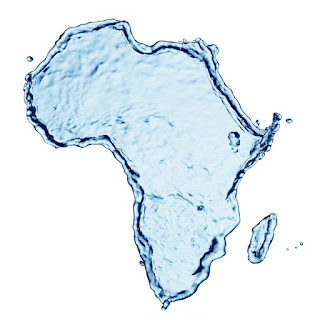Innovation for water in Africa: what needs to be done?
As previously mentioned in my previous blog posts, it is clear that the ‘water cycle is broken,’ and its consequences are worsened by land degradation from human practices and environmental change. It is important to note that the long-term environmental change and land transformation worldwide is a by-product of centuries of resource exploitation, intensive agricultural practices, infrastructure development. (Marchant et al. 2018) Furthermore, the expected temperature change from global warming presents the urgency of innovating effective water facilities, as it is estimated that 0.5-3.1 billion more people will be exposed to water scarcity. Satisfying this increasing demand for water also goes beyond addressing environmental change, such as the political impacts seen in the past and the ones to come. Given that more than 80 bodies of water in Africa are shared between two or more countries, observable on Figure 1, it has been seen and is still expected that there will be internal and inter-country conflicts over this vital resource. As a result, one possible approach would be to ensure food security, to alleviate tensions among the involved communities.
Figure 1: Water distribution in Africa (GLWD = Global Lake and Water Database)
Privatization of water
Over the recent years, there has been an argument that privatization of water could be the solution to push for innovative approaches. This is because private companies tend to be more willing to invest in emerging technologies that aim at improving water efficiency, costs and more. However, public sectors have been reluctant to privatise water supply networks, as there is also the argument that privatisation of water could lead to making this resource more expensive. This is observable in South Africa’s cholera outbreak in 2000 after the price surge from privatised water made it unaffordable for lower-income communities, leading them to use unsafe access points. Using this example, it is apparent that improving water efficiency requires substantial funds, and that public sectors are not always keen to invest in such infrastructure while simultaneously maintaining an adequate price. So, where do you find the funds without harming the community?
COP27
This subject was addressed in the COP27, the latest climate change conference in Sharm el-Sheikh, Egypt. In the short video below summarising the points addressed during the conference, one important point brought up was rethinking the global financial system. This brought the agreement of the ‘Loss and Damage Fund,’ a scheme aiming for developed countries to provide funds for low and middle income countries most affected by natural disasters. Now, this could be a huge step forward in balancing the climate injustice in Africa. However, it is important to make the right choices on where this budget will be spent. Personally, I believe this is the right opportunity for decades to come to install infrastructures that will sustain the consequences of environmental change adequately in relation to resource management such as water.
In the short video above summarising the points addressed during the conference, one important point brought up was rethinking the global financial system. This brought the agreement of the ‘Loss and Damage Fund,’ a scheme aiming for developed countries to provide funds for low and middle income countries most affected by natural disasters. Now, this could be a huge step forward in balancing the climate injustice in Africa. However, it is important to make the right choices on where this budget will be spent. Personally, I believe this is the right opportunity for decades to come to install infrastructures that will sustain the consequences of environmental change adequately in relation to resource management such as water.




Comments
Post a Comment